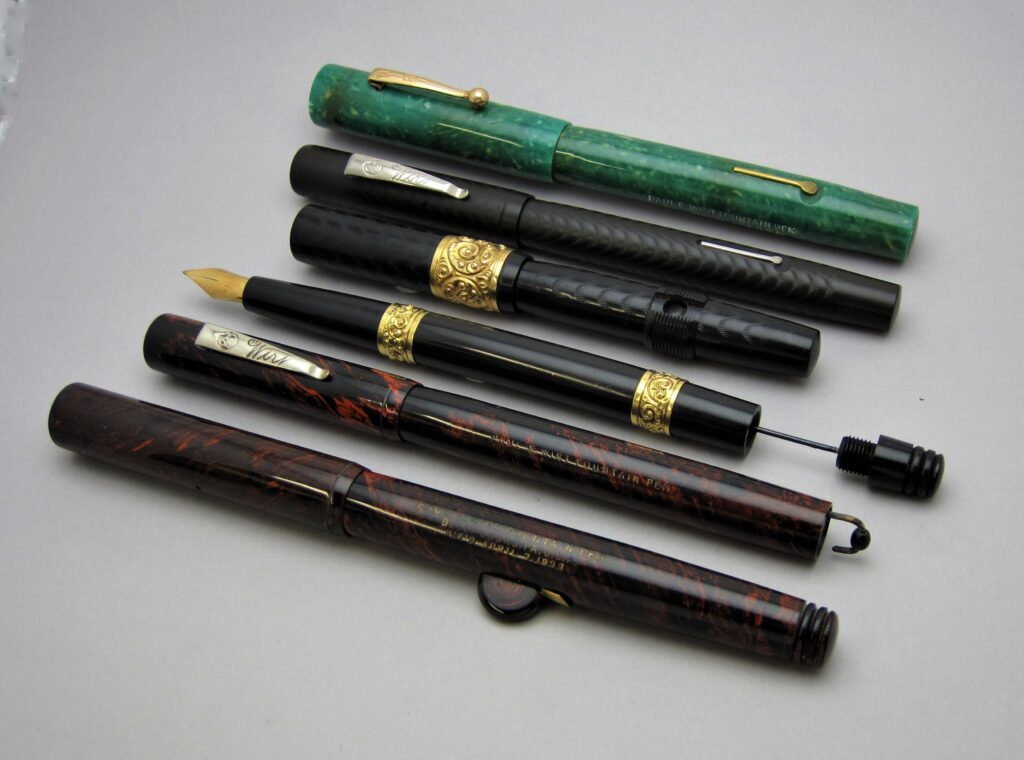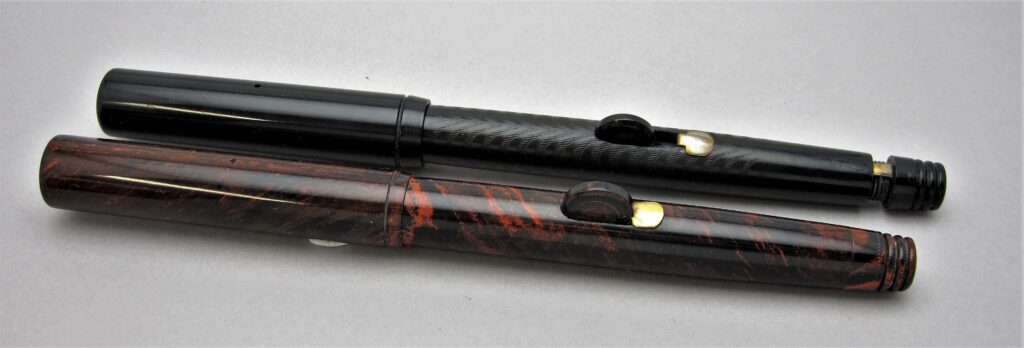
Paul Wirt fountain pens will almost always be dropper filled pens. Even his dropper filled pens can be seen with interesting features. Wirt patented and made a retractable nib safety filler (patents from 1894) and a swollen case (double reservoir) pen in 1900. Another unusual pen uses a rod inside the cap to act as an ink shut off valve when the cap is secured (patent 1901).
Self filling pens made their way to market with the Conklin crescent in the early 1900s, and more broadly with the Sheaffer lever filler in 1913. Wirt patented a self filling pen in January 1907. The concept is like the Conid Bulkfiller, but the execution left a lot to be desired. An end knob attaches to a wire. Twisting the wire allows you to grab an internal piston to push it down, and then pull back to fill the barrel. You can then disengage the piston and push the wire in, leaving the piston in position with the barrel full. In practice, it is not obvious when you have grabbed the piston, or when you are free from it to close the pen.
Wirt hump filling patents came a few months later in April 1907. There is a hidden internal bar that locks the hump in place. To retract the locking bar, the end of the barrel is unscrewed. It is an elegant system, but a bit slower to operate than the Conklin crescent or Grieshaber locking hump filler.

The Wirt Simplicity pen (I was unable to find a patent for this) was advertised in 1915. A curved wire on the end of the barrel pulls out slightly. It is attached to a bar inside the barrel. Depressing/rotating the wire turns the bar internally to compress the sac.
Wirt matchstick fillers with a rotating collar are also found. My example has a screw cap, dating its likely manufacture to 1910-1920.
At some point Wirt gave in and made a lever filler. Staying true to his desire to be unique, the inside of these pens continues to have a Wirt touch with a pressure bar unlike others in use. The bar is attached to the end of the barrel by a short segment of spring that allows it to be depressed, but then spring back strong enough to hold the lever flush to the barrel. Wirt celluloid pens are uncommon, and seem to be exclusively lever fillers.
